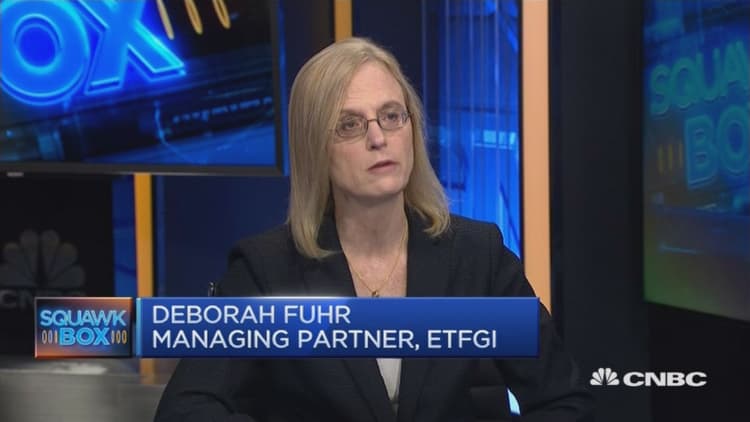Well, that didn't take long.
Less than two months after ETF Securities shocked the commodity ETF world with the launch of a broad-based commodity ETF charging just 0.29 percent in annual fees, far below the standard 0.75 percent fee, newcomer GraniteShares has done one better, launching its new GraniteShares Bloomberg Commodity Broad Strategy No K-1 ETF (COMB), with a management fee of just 0.25 percent per year.
With its launch, COMB instantly earns a place in my World's Cheapest ETF Portfolio, a diversified portfolio holding the lowest-cost ETF in each of six major asset classes. The portfolio provides exposure to more than 4,600 stocks in 47 different countries, over 3,100 bonds, dozens of currencies and 22 different commodities.
More from ETF.com:
ETF investors looking to park cash
Top tech ETFs of the year
What's the next ETF step for Vanguard?
When I started tracking the portfolio in 2008, the blended fee was 0.16 percent; today the fee is less than 0.06 percent a year (0.0585 percent a year, to be precise).
The world's cheapest ETF portfolio
| Asset class | Weight | ETF | Ticker | Expense ratio |
|---|---|---|---|---|
| U.S. equity | 40% | iShares Core S&P Total US Market | ITOT | 0.03% |
| Developed markets equity | 30% | Schwab International Equity | SCHF | 0.06% |
| Emerging markets equity | 5% | Schwab Emerging Markets Equity | SCHE | 0.13% |
| Fixed income | 15% | Schwab US Aggregate Bond | SCHZ | 0.04% |
| REITS | 5% | Schwab US REIT | SCHH | 0.07% |
| Commodities | 5% | Commodity Broad Strategy No K-1 ETF | COMB | 0.25% |
Source: ETF.com
The incredible decline in the cost of this portfolio is emblematic of the incredible decline in the cost for ETFs in general over the past 20 years.
While ETFs have always been low cost, one of the most powerful pieces of the ETF story is that they keep getting better over time. That's because, all else being equal, a larger ETF will be more liquid, track its index better, have better tax efficiency and be lower cost than a smaller ETF. By comparison, the exact opposite is true of actively managed mutual funds, which suffer under the weight of their own success.

As the table below shows, the cost for accessing broad-based asset classes has declined by 67 percent to 88 percent since the first ETF covering that asset class launched. That's an incredible statistic, and speaks to the often-overlooked scale benefits ETFs offer.
The ever-declining cost of ETFs
| Asset class | First ETF | Earliest fee | Current fee | Current asset class leader | Fee | Price decline from original |
|---|---|---|---|---|---|---|
| U.S. equity | SPY | 0.16% | 0.09% | ITOT | 0.03% | 81% |
| Developed markets equity | EFA | 0.35% | 0.33% | SCHF | 0.06% | 83% |
| Emerging markets equity | EEM | 0.75% | 0.68% | SCHE | 0.13% | 83% |
| Fixed income | AGG | 0.20% | 0.05% | SCHZ | 0.04% | 80% |
| Real estate | IYR | 0.60% | 0.45% | SCHH | 0.07% | 88% |
| Commodities | DBC | 0.75% | 0.75% | COMB | 0.25% | 67% |
Source: ETF.com
(Note: The original fees for ETFs are not easy to find. There is a chance that the "Earliest Fee Found" is not the actual original fee for these ETFs; in each case, I went back as far as I could in the records, but I'm not 100 percent convinced I got back to the original in each case.)
A lot of people ask me if we've reached the end of the ETF fee war. My answer is always no. As assets continue to flow into the space, fees will continue to come down, and that will ultimately be good for all investors.
— By Matt Hougan, CEO of Inside ETFs, a division of Informa




